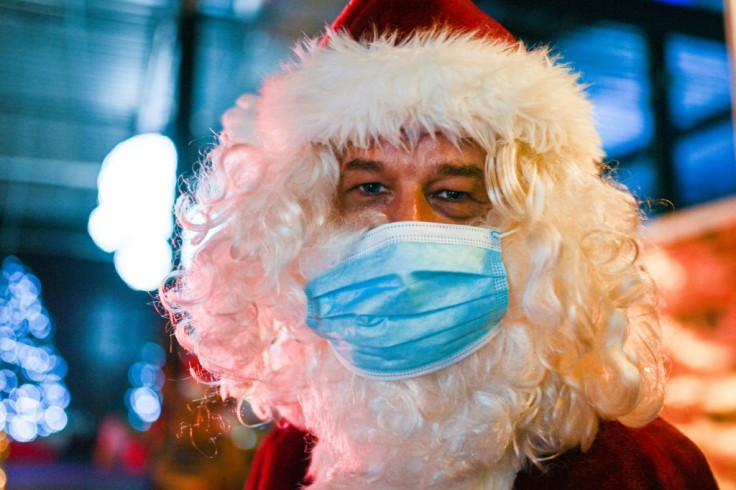It’s Christmas Eve: Please Mask up and Keep Your Distance

It’s official: Don’t rely on just your mask to protect you from coronavirus-contaminated droplets. You have to keep your distance if you want a fighting chance against contracting Covid-19.
Using technology designed to mimic what happens in face-to-face interactions, researchers from the Department of Mechanical and Aerospace Engineering at New Mexico State University tested various types of masks against an invasion of droplets, the kind that one cough or one sneeze would send into the air. The study was published this week in the Physics of Fluids.
The team found that only the N-95 medical graded mask would prevent any droplets from reaching a hypothetical, masked person who stood less than 6 feet apart from an infected person. The masks all stopped infected particles at the 6-foot distance. But at a closer range, the masks did not protect against smaller droplets. Even the N-95 mask.
The other types of masks were surgical, cloth, and two identical two-layer cloth masks, save that one was wet, the other dry, which filter particulate matter less than 2.5 µm. The researchers also measured the droplets from the perspective of an infected person wearing a mask to prevent infecting someone else.
It takes, the researchers wrote, quoting other research, about 1,000 virus particles, either inhaled at one time or in batches, for a susceptible person to become infected. A typical sneeze has 40,000 droplets: the typical cough, 3,000.
The researchers also measured the so-called escape percentage, which is the percentage of droplets that could make their way through a mask, or escape from it.
The data showed that at less than 6 feet of distance between an infected person and someone else:
- For the surgical mask results: the mean number of droplets from a sneeze that passed through this mask was 23; for the cough, 2. The escape percentage was between 0.06% and 0.03%.
- For the two-layered, dry 2.5 µm filter: the mean number of sneeze droplets was 681; for the cough droplets, 51. The escape percentage was between 1.70% and 0.48%.
- For the wet version: average number of sneeze droplets, 12; for the cough, 1. The escape percentage, 0.03% and 0.02%.
- For the two-layered cloth mask: the mean number of sneeze droplets, 1,445; for the cough, 108. The escape percentage, 3.61% and 0.46%.
The technique
The researchers built an air generator that imitates human sneezes and coughs. The generator blew small liquid particles past a laser located in a square tube that was equipped with a camera. In scientific parlance, this setup is called particle image velocimetry. PIV lets a researcher measure the speed of the entire field of flow at one time. PIV also gives the researcher deeper knowledge into flow behavior.
Said the researchers in their paper: “If the relevant social distancing guidelines are compromised, the study shows that foreign airborne sneeze and cough droplets could pass through all the masks tested (except for the N-95 mask) even when assuming a 100% snug fit.”
Published by Medicaldaily.com



























